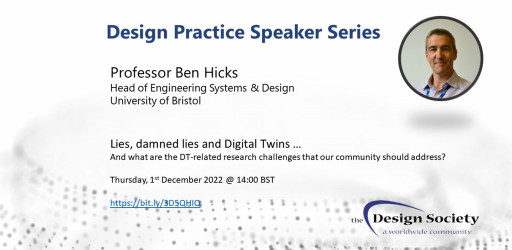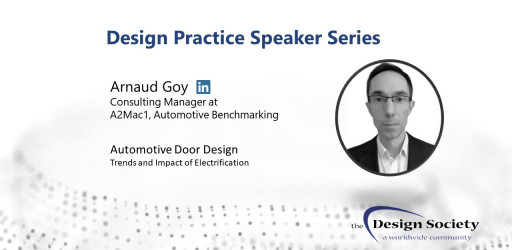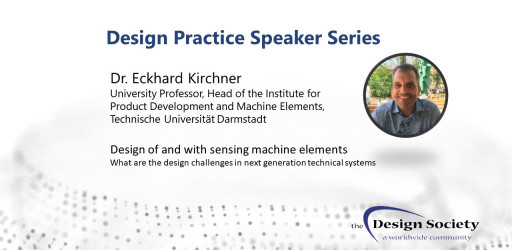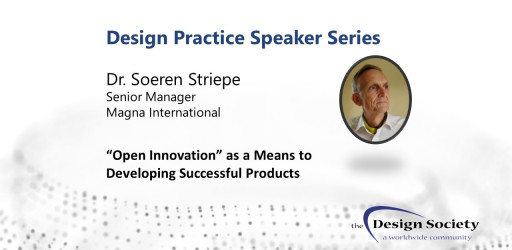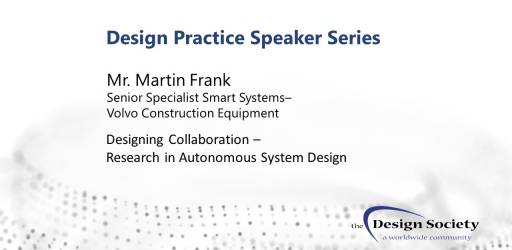Stefan, Götz; Benjamin, Schleich; Sandro, Wartzack // 2017
Accompanied by the frontloading efforts in product development, toler-ancing becomes more and more important in early design stages. Motivated by the lack of methods for early phases of the design ...
Herrmann, Thorsten; Binz, Hansgeorg; Roth, Daniel // 2017
Knowledge and information concerning a need or a problem are important for the steps of creating solution ideas which lead to the design of successful products. However, this information is often not ...
Paparo, Marco; Dosi, Clio; Vignoli, Matteo // 2017
Several studies identify the Design Thinking mindset as the crucial aspect of the Design Thinking implementation in organisations. However, it is not clear how to measure the DT mindset in ...
Boisseau, Etienne; Bouchard, Carole; Omhover, Jean-François // 2017
The open-source approach arose in the computer industry. It now also impacts physical goods. In order to benefit from alleged benefit of open-design for tangible artefact, it appears needed to model ...
Hackl, Jennifer; Krause, Dieter // 2017
Modularization of product families affects firms in many ways. Many of them have been investigated in research and observed in industry. But which effect will most likely occur, by which kind of ...
Toepfer, Ferdinand; Naumann, Thomas // 2017
Within the distributed development of highly complex products, complexity among involved individuals is a major issue. In order to allow transparency and consistency of information in between ...
Stenholm, Daniel; Stylidis, Konstantinos; Bergsjö, Dag; Söderberg, Rikard // 2017
With the highly competitive market environment, organizations which want to promote innovation are imposed to create strategic alliances. In this situation involved parties have to exchange knowledge ...
Turner, Cameron; Agyemang, Malena // 2017
Design teams approach design problems with a set of explicit requirements derived from the problem, but also bring a number of implicit design requirements to the problem through the culture within ...
Becerril, Lucia; Stahlmann, Jan-Timo; Beck, Jesco; Lindemann, Udo // 2017
Processes in Engineering Design are generally optimized towards efficiency, quality, costs, risks, etc., however an analysis that includes requirements from the process users' view is missing. Within ...
Lorenzini, Giana Carli; Olsson, Annika; Larsson, Andreas // 2017
Different levels of user involvement in product design range from understanding user needs to co-designing with users. Previous research shows older patients face difficulties to handle the ...
Maynard, Alex; Burnap, Alexander; Papalambros, Panos // 2017
Design data is used to inform decisions during the design process, and must often be segmented for tasks such as customer segmentation, design benchmarking, and market preference segmentation. ...
Morency, Michael; Anparasan, Azrah; Herrmann, Jeffrey; Gralla, Erica // 2017
Designers work in teams to design complex systems. They separate the design problem into subproblems and solve the smaller, more manageable subproblems. Because this affects the overall quality of ...
Piccolo, Sebastiano; Lehmann, Sune; Maier, Anja // 2017
Understanding the role of iterations is a prevalent topic in both design research and design practice. Furthermore, the increasing amount of data produced and stored by companies leaves traces and ...
Liem, André; Ruecker, Stan; Alfonso de la Rosa, Juan // 2017
This article proposes an alternative route towards initiating and developing formal design research projects, where design studios act as an "Initiator" and "Driver" for subsequent research ...
Kramer, Julia; Poreh, Danielle; Agogino, Alice // 2017
Human-centered design, for its value in allowing design practitioners to deeply engage with and understand the manifold needs of their end-users, is often invoked to tackle challenges of poverty and ...
Braun, Thomas; Strattner, Martin // 2017
The approach focuses on methods in the field of product variant management. Drawn from the experience over ten years of variant management work in practice, it suggests a toolbox which improves the ...
Faludi, Jeremy; Agogino, Alice; Beckman, Sara; Iles, Alastair // 2017
What sustainable design practices can also drive innovation, and what practices do people value? Previous analysis of sustainable design methods, and the opportunism of designers generally, has ...
McMahon, Muireann; Kiernan, Louise // 2017
Good design is gender neutral, as should be the design process that underpins it. However achieving equality in the design process is difficult as female product/industrial designers1 are ...
Dybvik, Jeanette Helleberg; Berg, Lise.Kari // 2017
This paper is a contribution to design education for the general public. Primary school teaching students at Oslo and Akershus University College of Applied Sciences (HIOA) have executed design tasks ...
Ito, Takao; Sakamoto, Mune-aki; Matsumoto, Keiko; Sagara, Jun-Ichi; Tanida, Ikuhiro; Takeuchi, Satoshi; Yasukawa, Miwa // 2017
Project-Based Learning (PBL) is the backbone of Kanazawa Institute of Technology (KIT) in Japan. In its curriculum, Project Design Program is applied in 14 departments in four colleges. It also ...
Bobbe, T.; Krzywinski, J.; Woelfel, C. // 2016
Academic design process models from different disciplines have been analysed and compared recently. Additionally, this paper presents an analysis that compares design process models from academia, ...
Shapiro, D.; Clarkson, P. J. // 2016
Research on changes in design has focused on changes in the product domain. However, because the product's design process may change as well, this article suggests a concept for a comprehensive ...
Shi, F.; Han, J.; Childs, P. R. N. // 2016
Design knowledge retrieval is a key part for creative idea generation in engineering design process, and it highly depends on the inherent associations between knowledge. Existing computer-based ...
Murata, Yoshiaki ; Takahashi, Masaki ; Takeuchi, Yosuke; Inoue, Masato // 2016
The early phase of design contains uncertain design information. Therefore, the boundary condition of a design problem often change as the design process progresses because of the change and addition ...

